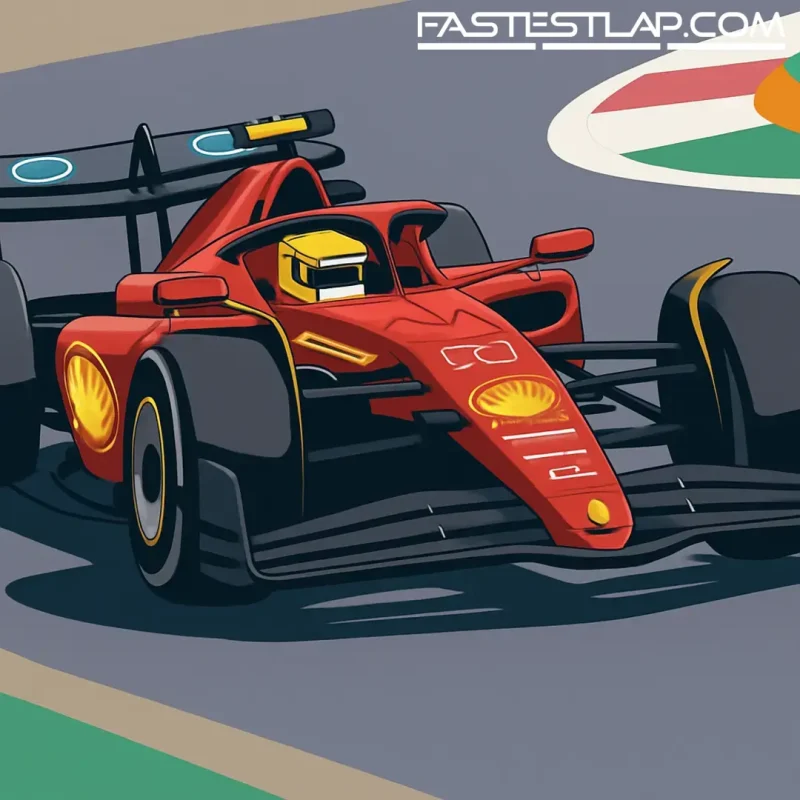Lewis Hamilton’s red renaissance is still a work in progress, and he knows it. Sixteen race weekends into life at Ferrari, the seven-time World Champion admits the SF-25 still asks him to drive in a way that doesn’t come naturally — even if the trend line is finally pointing up.
At Monza, where Ferrari expectation is oxygen and pressure, Hamilton came home sixth and, crucially, right with Charles Leclerc on raw pace for long stretches. It came a week after Zandvoort, where his Dutch GP ended in the barriers, and amid a season that’s swung between promise and puzzlement. The constant theme? He’s still learning how to wring speed from a car that wants something different from him.
“I’m not 100 percent comfortable with it,” Hamilton said post-race, describing the SF-25’s preferred technique as “kind of an alien driving style.” He’s not whining. He’s explaining. After 12 years at Mercedes, developing cars around a well-worn playbook and a familiar power unit, he’s landed in a different ecosystem at 40 — new engine, new tools, new rhythms. The adaptation isn’t instant.
There are flashes, though, and they’re getting more frequent. Hamilton says he tends to build into Sundays, unlocking pace as the laps rack up. “Through the race I get better and better — faster and faster,” he said, pointing to a growing confidence window by stint’s end. It tracks with what we see: the SF-25 has a narrow operating sweet spot, and when Hamilton finds it, he looks like… well, Lewis.
Ferrari’s year hasn’t made the process easy. This car likes precise inputs and a particular corner approach — think how it wants the rear prepared, how hard you can lean on mid-corner rotation, the way it carries speed without spiking tyre temps. Leclerc’s been living in that window longer; Hamilton’s still moving in. The margin has shrunk since the summer wobble, but he’s realistic about the ceiling right now: “We obviously don’t have the pace of the cars much further ahead,” he said.
Peel back the headline and the story is familiar. Hamilton’s career has been built on feel — a harmony between driver and machine that, when it’s aligned, turns qualifying laps into art and race stints into inevitability. With the SF-25, he’s been playing a slightly different instrument. The notes are beginning to sound right.
The long view matters too. 2026 is looming, and with it a regulations reset that could quietly be Hamilton’s best ally. The FIA’s next-gen package brings smaller, lighter cars, active aero at both ends and a beefed-up electrical deployment on sustainable fuels. Tyres are set to slim, and the drag-reduction toolkit gets reimagined. In short: a rebalancing of how grip is made and how it’s managed — and possibly a return to a more instinct-led driving style.
“Hopefully next year it’s not a driving style that’s here,” Hamilton said with a wry smile, hinting he’d like to lean back toward the habits that won him seven titles. It’s not a dig at Ferrari’s philosophy; it’s a driver wanting a car that talks to him in his language.
As for the present, the scoreboard still matters. Hamilton sits sixth in the 2025 standings, with Leclerc leading Ferrari’s charge across the season to date. Monza felt like a missed shot at more — traffic, strategy, and a race that never quite came to him — but also like validation that the pace is returning. If the last few rounds are the shape of things to come, Ferrari’s intra-team gap will keep closing.
There’s also the intangible: Hamilton looks engaged. The radio is lighter. The body language in the garage says he’s in this with the crew. For all the noise around the switch, this was always going to take time. It still might. But every stint where he grows into the car is another layer of trust built — and another hint that the alien is becoming familiar.




